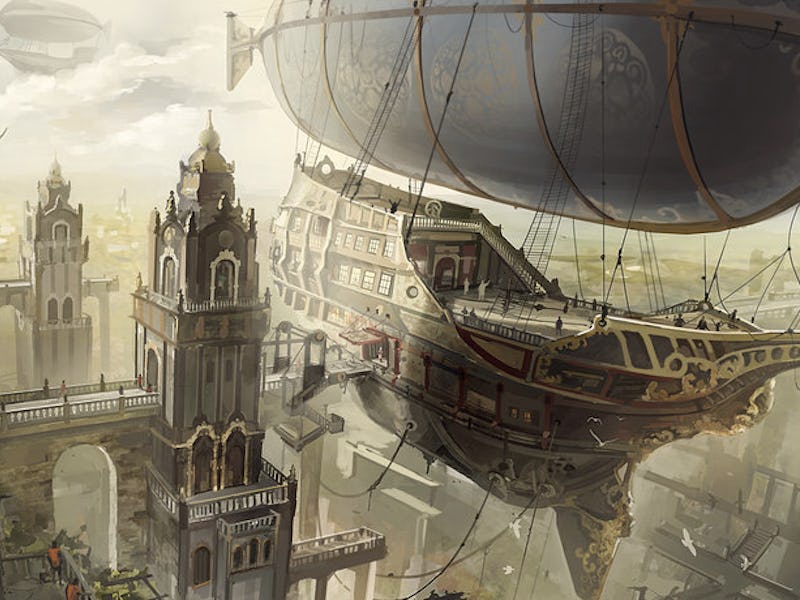'New York 2140' Reveals the Carbon Neutral Airships of the Future

Hailing an Uber or a self-driving car won’t be possible if all the roads are underwater, but author Kim Stanley Robinson thinks there will still be transportation solutions in the future that won’t involve flying cars. In his new science fiction novel, New York 2140, the author posits a future in which we rely on hydroplanes and carbon neutral airships to get around.
New York 2140 shows a world where climate change melted the Greenland and Arctic ice sheet, and caused the sea levels around the world to rise 10 feet. This floods a lot of New York City, forever changing the intricate workings of Manhattan. And yet, people are still commuting and driving around, just not in cars — instead, the city relies on hydroplane boats, something Robinson says was a natural extrapolation of existing technology. “Boats already exist that rise up above the water and plane on foils or shaped keels when they go fast enough,” Robinson tells Inverse. “Even some sailboats, and surfboards.”
The novel also depicts another post-car type of transportation: the rise of the airship. Robinson believes that airships might provide a sustainable way to not travel, but also to thrive in general. “With photovoltaic panels on their roofs, and batteries, [Airships] could be carbon neutral ways of getting around,” he said. “They wouldn’t be fast, but they might not be slow either, and they could be great in other ways. Mobile homes with great views.”
While airships have never really caught on in the post-Hindenberg era, they still might be a viable method of transportation in the future. Amazon has a patent for giant floating blimp warehouses, and some companies even see them as an eventual replacement for cargo planes. The world’s largest aircraft, the butt-shaped Airlander 10 could make Robinson’s vision more of a reality, as long as it figures out how to stay airborne.